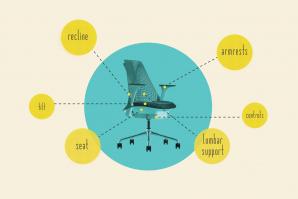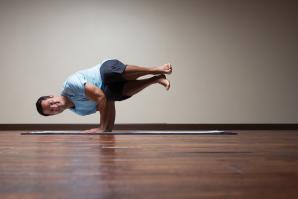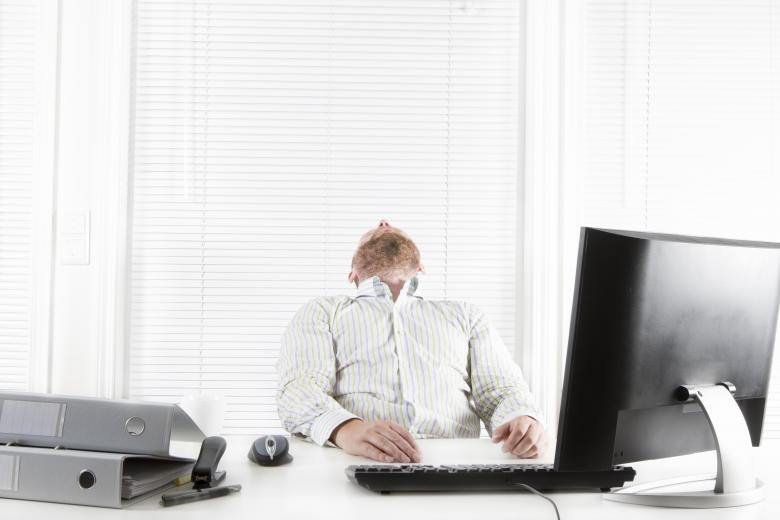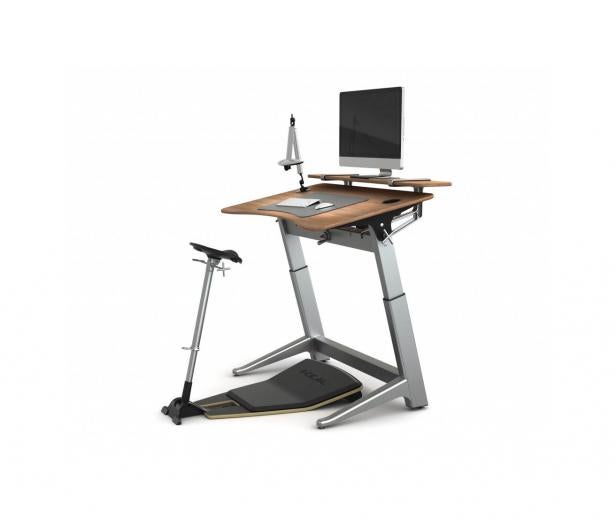Those long hours you’re logging at your desk may be taking a physiological toll that your morning run and bike commute can’t quite undo. We’re in the midst of a sitting epidemic that comes with some pretty scary health implications, but a simple change in our corporate culture might hold the key to better fitness for us all.
When you factor in everything from our work and car commutes to time spent on the couch and at the table, most of us are sitting an average of 13 hours a day. The majority of that sitting is taking place at work; one-third of Comstock’s readers we surveyed reported sitting for eight or more hours of their workday.
The perceptions of our office mates and managers is one of the top reasons employees cite for not taking more breaks, moving around, and adopting more active desks and seating. Which means our national sitting epidemic is a culture issue – a company culture issue.
When we sit for prolonged periods, our bodies produce more insulin to compensate for the lack of activity, which increases our likelihood of developing diabetes. A study conducted by the American Cancer Society showed women who sit for six hours a day are 37 percent more likely to die prematurely than women who sat for less than three hours, while the early-death rate for men was 18 percent higher. Another study found that people who sit for most of the day are 54 percent more likely to die of heart disease. The research is fairly unanimous: when it comes to sitting, less is more.
And going to the gym before or after long stints spent sitting doesn’t necessarily undo the damage. If you’re seated 11 or more hours per day, your risk of premature death goes up 40%, whether you hit the gym afterwards or not.
Being sedentary isn’t just bad for your health, it’s also bad business. It slows blood flow, which reduces mental acuity. Translation: The longer employees sit, the less productive they are. Recent studies have shown standing desks can improve productivity by about 10 percent, which is just one of the reasons AOL, Google, Twitter and Facebook have all begun making standing desks available around the office.
So how do you create an energized in-office culture of wellness and movement, where people feel free to take reasonable breaks, move about and use alternative seating? Here are a few best practices to get you started…
Lead by Example
Ninety-percent of the Comstock’s readers surveyed don’t use active seating options (like swiss ball chairs and standing desks). When asked, 81 percent of Sacramentans said they’d opt for active seating if it was “actively encouraged around the office.” Which means eight out of 10 of your office mates would probably consider making the change if a few brave souls would take the lead.
Studies have shown the presence of a single standing desk in an office can be enough to trigger coworkers to get up and moving during the workday. So go ahead, be the office’s early adopter – and offer positive reinforcement to colleagues who take the plunge.
Start a Conversation
Send a quick email around the office with an article on the health and productivity impacts of sitting (this one will do). Or, have a quick chat with your co-workers, boss or HR manager about what you can do to make the office more active. Change happens when when people are aligned around a shared idea and motivated to act.
Incentivize via Wellness Programs
Having a company-sponsored corporate wellness program has been shown to increase productivity by 8 percent as well as improve employee acquisition and retention. It can also reduce sick days and health insurance costs.
Existing corporate wellness programs, like the one FitBit has created, mean you don’t have to invent your own wellness program from scratch. FitBit’s program lets individuals, teams, or even whole departments to compete for most miles walked, calories burned, or least hours seated. The key is using a program that actually engages your team and meets their needs.
Turn it into Team Building
Nilofer Merchant, the Silicon Valley business woman who’s TED talk proclaimed that ”sitting has become the smoking of our generation,” first discovered movement on the job when she was invited to a walking meeting. Conducting meetings on a stroll improves idea sharing and communication while reducing resistance to new ideas as well as time spent sitting.
Cultures tend to shift and evolve one natural step, trend or change at a time. You don’t have to overhaul your entire company culture overnight to foster a more fit and active office. Implementing even one change will likely begin creating a natural shift that gets results.
Sick of missing out? Sign up for our weekly newsletter highlighting our most popular content. Or take it a step further and become a print subscriber — it’s both glossy and affordable!
Recommended For You

How Does Your Desk Chair Measure Up?
If you work at a desk, chances are you spend the majority of your day seated at its accompanying chair. There are alternatives available—including treadmills, exercise balls and kneeling chairs all designed for the desk-bound worker. But if that’s too avant gard for you (or your office), here’s a few things to consider when looking for a chair that won’t send you home hunched over and craving the fetal position. Then, tell us how you really feel.

Working Holiday
How to take a vacation without anyone knowing
The reality is that independent workers don’t get paid vacations, and often don’t have the option to not work. But that shouldn’t come at the cost of leisure—it just means getting a bit more creative with the ever-elusive work-life balance. So, how do you take a trip without anyone knowing?

Hurts So Good
Yoga is good for you, but be careful boys
I’ve always snickered at yoga.It just seemed ridiculous. But men are flocking to yoga the way we once, in the ’80s, took to this thing called “jogging.” We’re learning that yoga bestows a slew of health benefits — physical, mental, even sexual. But new research also points to increased health risks for men, and this muddies the decision.

Daddy Issues
Why aren't more men taking paternity leave?
On opening day of the 2014 baseball season, New York Mets second baseman Daniel Murphy was noticeably absent. He wasn’t benched. He didn’t have the flu. He simply took advantage of Major League Baseball’s paternity leave policy, which grants 72 hours off, to attend the birth of his son.
And all hell broke loose.





Comments
Uh oh! Time to get a standing desk...
You'd better hurry Dennis, before your spine gives up and jumps ship!
I hate that the term "standing desk" has been adopted by the media regarding this topic. If you provide only a place to work while standing, a whole slew of other health risks develop. If you want some examples, look to nurses, factory workers and grocery cashiers... Many of the articles and "lifehacks" making the rounds these days show how people need to change from a seated to standing position, but don't provide any reference to the amount of time and how often one should vary between sitting and standing. The "standing desk" exists to provide an alternative position, a "break," to a properly adjusted sound ergonomic seated position. Just because you have a stand-up workstation, you don't get to ignore ergonomics.